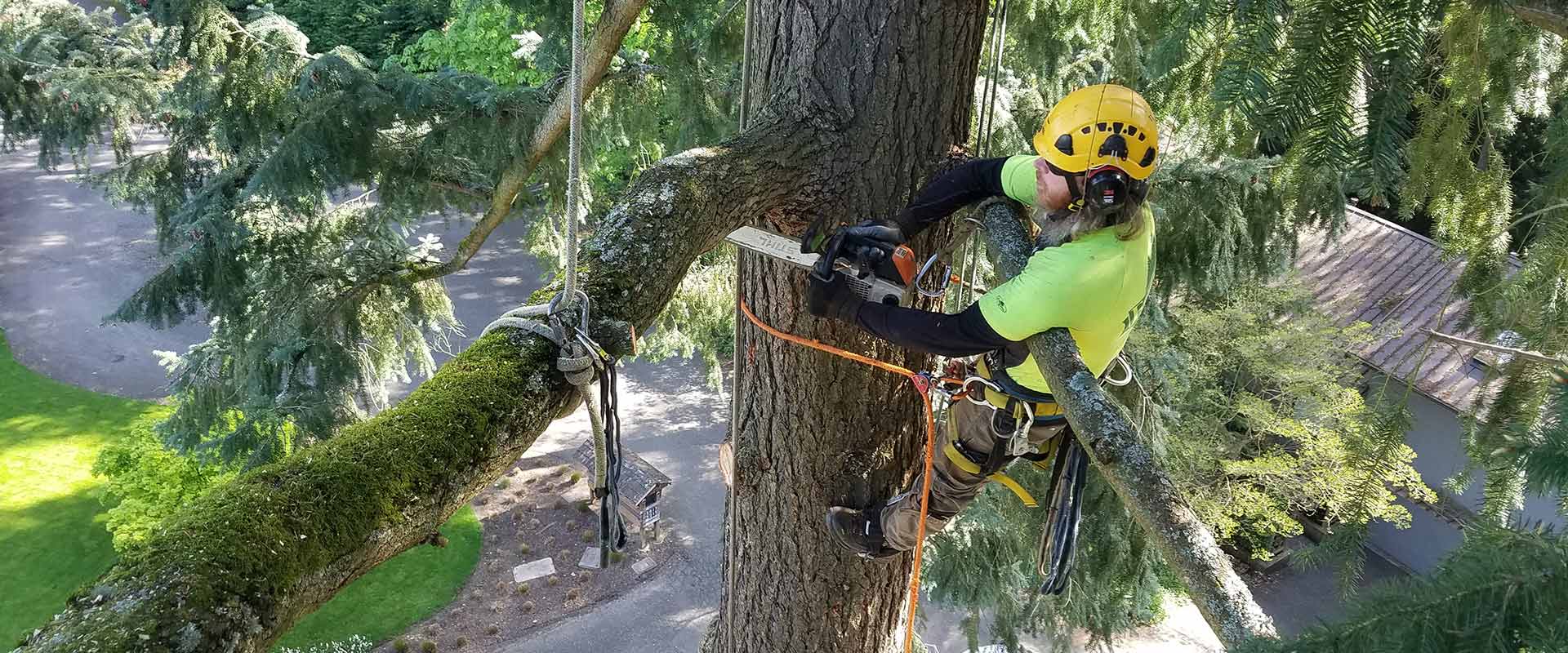Pruning is key to maintaining the health and aesthetics of your yard trees. It promotes growth, prevents disease, and enhances the tree’s overall structure — ensuring your trees thrive for years to come.
In this guide, we’ll cover everything you need to know about tree pruning, including the best times to prune, its benefits, essential techniques, common mistakes to avoid, and when to call professional Seattle tree pruning services.
With the right approach, you can promote healthier growth and maintain the natural beauty of your landscape.
Benefits of Pruning
Pruning goes beyond keeping the aesthetic appeal of your trees. It directly impacts their health and longevity. Here are the benefits of this process:
- Disease Prevention: Removing infected or damaged branches helps prevent diseases from spreading to the rest of the tree.
- Improved Structure: Regular pruning encourages strong limb development, reducing the risk of breakage during storms.
- Enhanced Fruiting and Flowering: For fruit-bearing trees, pruning increases yield by directing energy to healthy branches that produce more flowers and fruit.
- Increased Sunlight Penetration: Removing overcrowded branches allows more sunlight to reach the lower parts of the tree, improving overall growth and vitality.
Optimal Timing for Pruning
The best time to prune trees depends on species, climate, and goals. Most trees benefit from late winter to early spring pruning, which encourages strong growth and reduces disease risks. Spring-flowering trees, like cherry, should be pruned after blooming, while summer bloomers, such as crepe myrtles, thrive with late winter pruning.
Light summer pruning helps to control growth but may cause tree stress. Instead, focus on light trimming in late winter or early spring for optimal tree recovery — especially in wet regions — to prevent fungal issues.
Experts discourage fall pruning due to slower healing and disease risk. At the same time, frost-prone areas should avoid early winter cuts since trees tend to heal poorly at this time.
Essential Pruning Techniques and Best Practices
Seattle’s wet climate makes trees more susceptible to fungal diseases, making proper pruning techniques crucial to prevent infection. Here are some of the different cutting methods that arborists use when caring for trees:
Types of Pruning Cuts
- Thinning: This technique removes selected branches to enhance airflow and sunlight exposure, reducing disease risk and promoting healthier interior growth without altering the tree’s natural shape.
- Reduction: This approach shortens branches to control size, minimize structural stress, and maintain proper shape. It is often used to prevent interference with buildings or power lines.
- Raising: This process eliminates lower branches to clear walkways, driveways, and sightlines. It improves accessibility while ensuring balanced growth and preventing obstruction-related hazards.
Essential Tree Care Tools and Proper Maintenance
Using the right tools — and keeping them in peak condition — ensures precise cuts that support tree health and prevent unnecessary damage.
Well-maintained equipment not only enhances efficiency but also minimizes strain on both the user and the tree, making pruning safer and more effective.
- Hand Pruners: Ideal for cutting small branches and twigs, hand pruners provide precision and control for detailed pruning tasks. Bypass pruners work best for live branches, while anvil pruners are better suited for deadwood.
- Loppers: These tools are designed for medium-sized branches. They have long handles for better leverage, allowing you to cut without much effort.
- Pruning Saws: These are essential tools for cutting large branches. Use them to prevent jagged cuts that could lead to disease or decay.
Common Pruning Mistakes to Avoid
Poor pruning techniques can do more harm than good, leading to weakened trees, disease, and stunted growth. Here are some common mistakes to avoid to keep your trees healthy and resilient.
- Over-Pruning: Removing too many branches at once weakens a tree and stunts growth. It also reduces its ability to photosynthesize. Trees need enough foliage to produce energy, so only remove what’s necessary for structure and health.
- Flush Cuts: Cutting too close to the trunk removes the protective branch collar, hindering the healing process.
- Leaving Stubs: Never cut too far from the trunk, as this creates deadwood that can cause rot and attract pests.
- Topping: Severely cutting back the top of a tree weakens its structure and increases its susceptibility to breakage and disease.
If unsure, follow the ‘one-third rule’: never remove more than one-third of a tree’s canopy at a time.
Safety Considerations
Pruning can be risky, especially when using sharp tools or working at heights. To stay safe, always wear gloves to protect your hands, eye protection to shield against flying debris, and sturdy shoes for better footing. If you need a ladder, ensure it’s on solid ground and have someone nearby for support.
Never overreach — losing balance can lead to serious falls. Before cutting, check for power lines, weak branches, or other hazards. If the job seems too dangerous or the tree is too large, don’t take chances — call a professional to handle it safely.
Choose a Qualified Arborist
Selecting the right Seattle tree pruning service ensures healthy, well-maintained trees.
Look for certified professionals with insurance and expertise in local tree care. Seattle’s climate and tree species require specialized pruning techniques to promote longevity and resilience.
A qualified arborist provides precise cuts, prevents damage, and enhances tree health. Prioritize experienced professionals with a strong reputation for safety and quality work to avoid costly mistakes and ensure expert tree care.
Proper tree pruning keeps your yard’s trees thriving. Trust Eastside Tree Works, your expert Seattle tree pruning service, for professional care that ensures lasting beauty and strength. Contact our team today!

